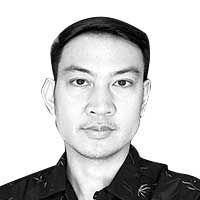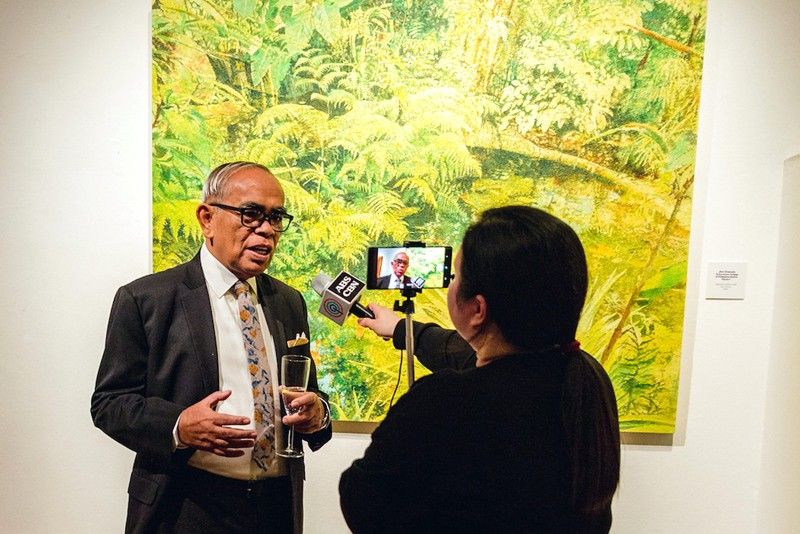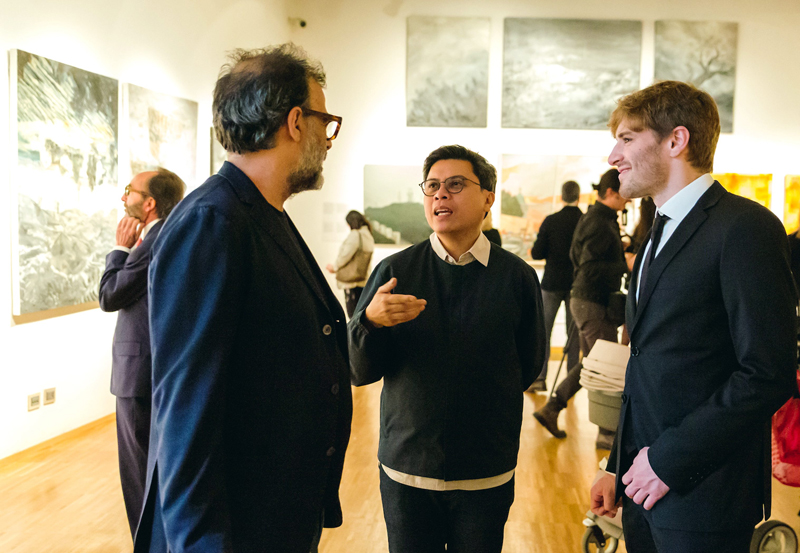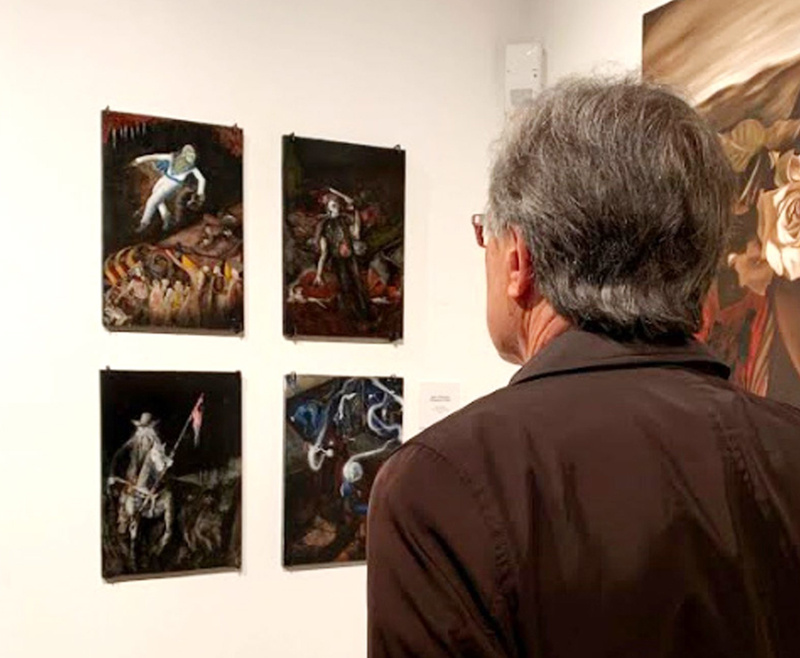From Manhattan to Milan: What does it mean for Filipino works to go international?


Pintô’s international show, Living Earth: Contemporary Philippine Art, could not have been better timed. Deliberately scheduled in Milan a couple of days before the vernissage of the Venice Biennale on May 8, it was meant to gesture at — if not directly engage with — the world’s most important platform for the arts. Connections can be meaningfully teased out: Mark Justiniani, the sole artist whose work is showcased in the Philippine Pavilion, was one of the founding members of Salingpusa that flourished under the guidance of Dr. Joven Cuanang, the heart and soul of Pintô. (Justiniani was, in fact, represented by a couple of works in the Milan show.) Patrick Flores, who was the first curator of the Philippine Pavilion after its absence from the Venice Biennale for 50 years, co-curated the Pintô show, alongside native Italian Luca Beatrice.
That the Pintô show could serve as an initial salvo for Philippine art in Italy this year was nothing short of a feat, but it was not unthinkable. Pinto, after all, has rolled out pop-up exhibitions in Tokyo and Manhattan (twice!), and Europe easily became the next frontier to conquer. Italy was the natural choice as Luca Parolari, who heads Pintô International, is an Italian and, as such, pulled out all the stops in making the Milan show a success. Opening at MAC (MusicaArteCultura) at the Piazza Tito Lucrezio Caro, the room was buzzing, and the crowd had to be shushed when the program began. But you knew they were interested in and looked at the art, as this was Italy, and looking at art comes naturally to the Italians, like taking a shot of espresso.

Patrick Flores (center) curated “Living Earth” with Luca Beatrice (left). Pintô International director Luca Parolari organized the Milan show.
For Dr. Cuanang, creating these international shows, which requires massive resources (just imagine the logistics of shipping the works of 26 artists from Manila to Milan), is an “opening for us to be able to converse, to have a good conversation with the rest of the world.” Art is envisioned by the good doctor as a dialogic enterprise, as a way to tell other cultures things about ourselves and where we come from, which Dr. Cuanang described to the guests as “a string of islands from the Pacific.”
Because the truth of the matter is that Philippine art is still largely insular — a soliloquy sung from the string of islands from the Pacific. While some Filipino artists circulate in the global art world (David Medalla and Manuel Ocampo come to mind), they are few and far between. Even the art market is still willfully (woefully?) local. It’s no secret that most of the Filipino works offered by the big international auction houses are still snapped up by local collectors.

A viewer engrossed with Igan D’Bayan’s work, “Exquisite Toxins.”
But what does it mean to be “international” and why, in the first place, should this be held as an ideal? First is the nature and complexity of today’s art world. It is international — a uniquely porous, if not borderless, sphere of people and institutions from the different parts of the globe that define the contemporary moment for visual arts. Such a decentered view of the art world allows for a more open interface between identities, stories, and histories, such as that of Leon Pacunayen, the anchor of the Pintô show and whose works became the focal point upon which the other artists engaged, with his narrative of migration, alienation and settlement. One can argue that there are art worlds that could operate independently and free of each other, but these are still connected by a tenuous thread, which is the belief in art.
Second, visibility is power. To be in Milan, one of the world’s most important cultural centers, means that our representation is not owed to how others choose to see and write about us. To be in the Venice Biennale means asserting an artistic vision uniquely rooted in our archipelagic history, mesmerizingly told by the installation of Justiniani, which has consistently figured in the “best of” lists of different art publications. To be invisible in these places of prestige is to be invisible, period. Or perhaps, something much worse could ensue: to be represented by a voice or a vision not our own.

Leon Pacunayen, the Filipino modernist who has lived in Italy for the past 50 years and whose works serve as the inspiration for contemporary artists participating in the show, signs an autograph.
Third is the belief that art can address us as a collective and offer something crucial and immediate to the pressing issues of the times. It’s no wonder that many of the pavilions in the Venice Biennale — including the Lithuanian Pavilion, adjudged as the best, which features an opera performance in a beach setting lamenting environmental collapse — deal with the degradation of the planet and the future of humanity: art as a way to alter consciousness and redefine what is possible, what could be. “There are so many ills of the world right now,” Dr. Cuanang stated in his speech. “I believe in the fact that art heals.”



















